Dagmar Bruß, Gerd Leuchs3527405275, 9783527405275
This comprehensive textbook on the rapidly advancing field introduces readers to the fundamental concepts of information theory and quantum entanglement, taking into account the current state of research and development. It thus covers all current concepts in quantum computing, both theoretical and experimental, before moving on to the latest implementations of quantum computing and communication protocols. With its series of exercises, this is ideal reading for students and lecturers in physics and informatics, as well as experimental and theoretical physicists, and physicists in industry.
Table of contents :
Cover Page……Page 1
Title: Lectures on Quantum Information……Page 4
ISBN 3527405275……Page 5
2 Computational Complexity……Page 6
5 Channels and Maps……Page 7
8 The Separability versus Entanglement Problem……Page 8
11 Purification and Distillation……Page 9
12 Bound Entanglement……Page 10
15 Theory of Quantum Key Distribution (QKD)……Page 11
18 Requirements for a Quantum Computer……Page 12
20 One-way Quantum Computation……Page 13
23 Quantum Computing Experiments with Cold Trapped Ions……Page 14
25 Quantum Computing Implemented via Optimal Control: Theory and Application to Spin and Pseudo-Spin Systems……Page 15
29 Quantum Electrodynamics of a Qubit……Page 16
Index……Page 17
Preface……Page 18
List of Contributors……Page 20
Part I Classical Information Theory……Page 26
1.2 Basics of Classical Information Theory……Page 28
1.3 Linear Block Codes……Page 34
1.4 Further Aspects……Page 40
2.1 Basics……Page 42
2.2 Algorithms and Time Complexity……Page 44
2.3 Tractable Trails: The Class P……Page 45
2.4 Intractable Itineraries: The class NP……Page 46
2.5 Reductions and NP-completeness……Page 52
2.6 P vs. NP……Page 54
2.7 Optimization……Page 56
2.8 Complexity Zoo……Page 59
Part II Foundation of Quantum Information Theory……Page 62
3.1 Introduction……Page 64
3.2 Finite-dimensional quantum systems……Page 65
3.3 Continuous-variables……Page 68
4.2 The No-Cloning Theorem……Page 78
4.3 State-Dependent Cloning……Page 79
4.4 Phase Covariant Cloning……Page 87
4.5 Universal Cloning……Page 88
4.6 Asymmetric Cloning……Page 92
4.8 Experimental Quantum Cloning……Page 93
4.9 Summary and Outlook……Page 94
5.2 Completely Positive Maps……Page 98
5.3 The Jamiolkowski Isomorphism……Page 101
5.4 The Stinespring Dilation Theorem……Page 103
5.5 Classical Systems as a Special Case……Page 107
5.6 Examples……Page 108
6.1 Introduction……Page 112
6.2 Precursors……Page 113
6.3 Shor’s Factoring Algorithm……Page 118
6.4 Grover’s Algorithm……Page 121
6.5 Other Algorithms……Page 122
6.6 Recent Developments……Page 124
7.2 Quantum Channels……Page 130
7.3 Using Classical Error-Correcting Codes……Page 134
7.4 Further Aspects……Page 143
Part III Theory of Entanglement……Page 146
8.2 Bipartite Pure States: Schmidt Decomposition……Page 148
8.3 Bipartite Mixed States: Separable and Entangled States……Page 149
8.4 Operational Entanglement Criteria……Page 150
8.5 Nonoperational Entanglement Criteria……Page 153
8.6 Bell Inequalities……Page 160
8.7 Classification of Bipartite States with Respect to Quantum Dense Coding……Page 163
Acknowledgments……Page 167
9.1 Introduction……Page 172
9.3 Entanglement of Gaussian States……Page 174
9.4 More on Gaussian Entanglement……Page 182
Exercises……Page 183
10.1 Introduction……Page 186
10.2 Manipulation of Single Systems……Page 188
10.3 Manipulation in the Asymptotic Limit……Page 189
10.4 Postulates for Axiomatic Entanglement Measures: Uniqueness and Extremality Theorems……Page 191
10.5 Examples of Axiomatic Entanglement Measures……Page 194
11.1 Introduction……Page 202
11.2 Pure States……Page 204
11.3 Distillability and Bound Entanglement in Bipartite Systems……Page 206
11.4 Bipartite Entanglement Distillation Protocols……Page 209
11.5 Distillability and Bound Entanglement in Multipartite systems……Page 217
11.6 Entanglement Purification Protocols in Multipartite Systems……Page 218
11.7 Distillability with Noisy Apparatus……Page 222
11.8 Applications of Entanglement Purification……Page 227
Acknowledgments……Page 230
Glossary……Page 231
12.2 Distillation of Quantum Entanglement: Repetition……Page 234
12.3 Bound Entanglement—Bipartite Case……Page 238
12.4 Bound Entanglement: Multipartite Case……Page 250
12.5 Further Reading: Continuous Variables……Page 255
13.1 Introduction……Page 262
13.2 Pure States……Page 263
13.3 Mixed States……Page 268
13.4 Quantifying Multiparticle Entanglement……Page 271
13.5 Stabilizer States and Graph States……Page 272
13.6 Applications of Multiparticle Entangled States……Page 274
Part IV Quantum Communication……Page 278
14.1 Introduction……Page 280
14.2 Experimental Realization……Page 285
14.3 Continuous Variables—Concept and Extension……Page 288
15.2 Classical Background to QKD……Page 296
15.3 Ideal QKD……Page 297
15.4 Idealized QKD in noisy environment……Page 300
15.5 Realistic QKD in noisy and lossy environment……Page 302
15.6 Improved Schemes……Page 305
15.7 Improvements in Public Discussion……Page 307
15.8 Conclusion……Page 308
16.1 Aunt Martha……Page 310
16.2 Quantum Cryptography……Page 311
16.3 Entanglement-Based Quantum Communication……Page 317
16.4 Conclusion……Page 320
17.2 Continuous Variable Quantum Systems……Page 322
17.3 Tools for State Manipulation……Page 325
17.4 Quantum Communication Protocols……Page 329
Part V Quantum Computing: Concepts……Page 338
18.1 ClassicalWorld of Bits and Probabilities……Page 340
18.2 Logically Impossible Operations?……Page 345
18.3 Quantum World of Probability Amplitudes……Page 348
18.4 Interference Revisited……Page 351
18.5 Tools of the Trade……Page 353
18.6 Composite Systems……Page 360
18.7 Quantum Circuits……Page 366
18.8 Summary……Page 371
19.2 Gottesman/Chuang Trick……Page 374
19.3 Optical Background……Page 376
19.4 Knill–Laflamme–Milburn (KLM) scheme……Page 378
20.1 Introduction……Page 384
20.2 Simple examples……Page 386
20.3 Beyond quantum circuit simulation……Page 390
20.4 Implementations……Page 399
20.6 Outlook……Page 401
Exercises……Page 402
21.1 Geometric Phase and Holonomy……Page 406
21.2 Application to Quantum Computation……Page 409
Part VI Quantum Computing: Implementations……Page 414
22.2 Trapped Ions……Page 416
22.3 Trapped Neutral Atoms……Page 426
23.1 Introduction……Page 448
23.2 Paul Traps……Page 450
23.3 Ion crystals and their normal modes……Page 453
23.4 Ion–light interaction……Page 457
23.5 Levels and Transitions for Typical Qubit Candidates……Page 458
23.6 Various Two-Qubit Gates……Page 459
23.7 Teleportation……Page 468
23.8 Segmented Traps and Future Directions……Page 469
24.1 Introduction……Page 476
24.2 Concepts……Page 477
24.3 Electron Spin Qubits……Page 483
24.4 Superconducting Qubits……Page 494
25.1 Introduction……Page 506
25.2 From Controllable Spin Systems to Suitable Molecules……Page 508
25.3 Scalability……Page 510
25.4 Control Theory for Spin- and Pseudo-Spin Systems……Page 512
25.5 Applied Quantum Control……Page 517
25.6 Conclusions……Page 520
Part VII Transfer of Quantum Information Between Different Types of Implementations……Page 528
26.1 Introduction……Page 530
26.2 Concept of the quantum repeater……Page 532
26.3 Proposals for Experimental Realization……Page 536
Acknowledgments……Page 538
27.1 Introduction……Page 540
27.2 Off-Resonant Interaction of Light with Atomic Ensemble……Page 541
27.3 Entanglement of Two Atomic Clouds……Page 549
27.4 Quantum Memory for Light……Page 551
27.5 Multiple Passage Protocols……Page 553
27.6 Atoms-light teleportation and entanglement swapping……Page 556
27.7 Quantum Cloning into Atomic Memory……Page 557
27.8 Summary……Page 559
28.1 Introduction……Page 562
28.2 Microwave Cavity Quantum Electrodynamics……Page 563
28.3 Optical Cavity Quantum Electrodynamics……Page 568
28.4 Conclusions and Outlook……Page 574
29 Quantum Electrodynamics of a Qubit……Page 580
29.1 Quantum Electrodynamics of a Qubit in a Spherical Cavity……Page 581
29.2 Suppression of Radiative Decay of a Qubit in a Photonic Crystal……Page 589
Part VIII Towards Quantum Technology Applications……Page 598
30.1 Introduction……Page 600
30.2 The Interferometer……Page 601
30.3 Interferometer with Coherent States of Light……Page 604
30.4 Interferometer with Squeezed States of Light……Page 606
30.5 Summary and Discussion……Page 612
31.1 Introduction……Page 616
31.2 The Quantum Laser Pointer……Page 617
31.3 Manipulation of Spatial Quantum Noise……Page 618
31.4 Two-Photon Imaging……Page 620
31.5 Other Topics in Quantum Imaging……Page 622
31.6 Conclusion and Perspectives……Page 623
C……Page 626
D,E……Page 628
H……Page 629
L……Page 630
O……Page 631
P……Page 632
Q,R……Page 633
T……Page 634
U,V,W,X,Y,Z……Page 635
Back Page……Page 636
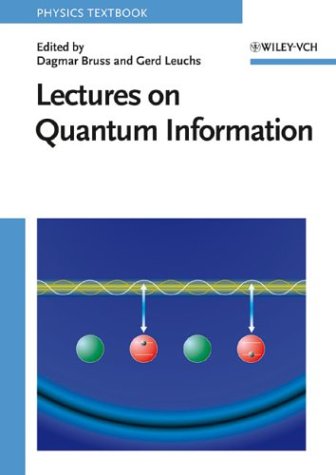
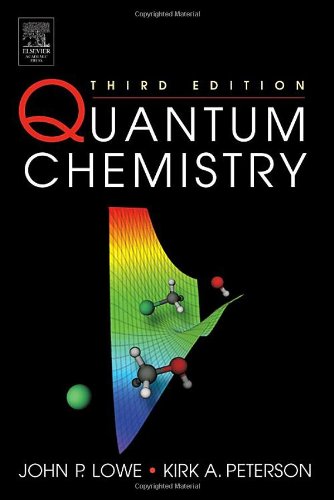
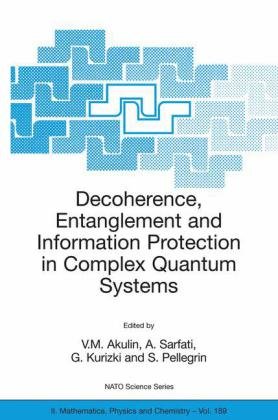
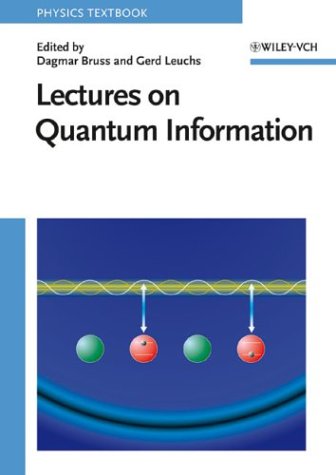

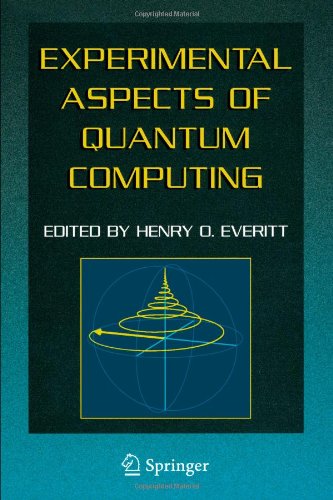

Reviews
There are no reviews yet.